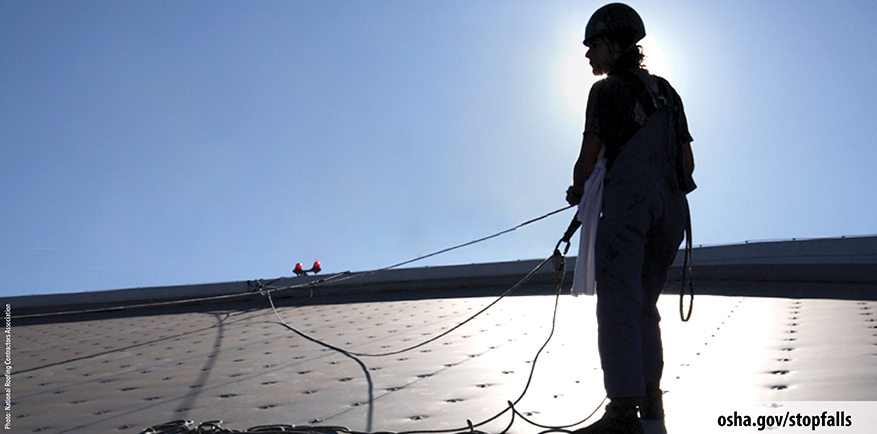The key to preventing the pitfalls above is to establish a strong culture of safety within your organization. This process starts with the leadership and buy-in of safety managers and plant engineers, who continually emulate the proper safety measures. This includes taking steps to secure loading docks and mezzanines, while also taking a proactive approach to maintaining a clean, dry organized warehouse. Here are five steps you can take decrease the risk of falling within your warehouse:
1) ESTABLISH A VISUAL BARRIER AROUND YOUR LOADING DOCK
"For the clear majority of docks, a visual barrier is sufficient. To be as safe as possible, the visual barrier needs to be prominent. The barrier should be a bright color. Yellow is preferred because it's the international safety color indicating "warning." To be productive around busy docks, the visual barrier should be able to be installed and removed as quickly as possible."
- Maree Mulvoy, Safety and Health Magazine
A visual barrier such as a bright yellow guardrail or safety gate can play an instrumental role in preventing falls from loading docks. Additionally,barriers can help truck drivers and forklift operators visualize a loading dock's edge and avoid collisions and other accidents.
2) INVEST IN A RELIABLE FALL PROTECTION SYSTEM

OSHA states that "personal fall arrest systems (PFAS) (such as safety harnesses, lifelines, lanyards) are required" in situations where guardrails are not feasible or in situations that involve work from two-point suspended scaffolding. Positioning device systems may also be used to "provide protection from falling off an unguarded edge" of a platform or mezzanine.
Remember that not all fall protection systems are created equal. When choosing a trusted fall protection partner, be sure to look for a company with decades of experience in creating fall protection equipment. Additionally, make sure that the provider you choose offers the type of system that is best suited for your warehouse. Examples include bridge systems, fold away systems, and swing arm systems.
3) KEEP PLENTY OF PERSONAL PROTECTIVE EQUIPMENT (PPE) ON HAND
"Employers are also responsible for determining whether personal protective equipment (PPE) is necessary, providing it, and ensuring it is being used and maintained properly. Supervisors should also wear gear when appropriate, and stress to workers that wearing isn't just a rule, but that it protects them from injury and illness."
- Sam Puckett, Fulcrum
A lack of access to the proper PPE should never be an excuse for injury or death. Make sure that you have the proper safety harnesses, vests, eyewear, boots, and other industry-specific gear on hand for employees and visitors to access.
4) POST PLENTY OF SAFETY SIGNAGE
The power of safety signage cannot be overestimated. Warehouse signage serves as a constant visual reminder that workers need to exercise caution and follow safety protocol when performing their jobs. Make sure signs are brightly colored and posted in highly visible areas of your warehouse. Examples include loading dock areas, mezzanines, and stairwells.
5) KEEP YOUR WAREHOUSE FLOORS CLEAN AND DRY
"No matter how careful your employees are, if it's snowing outside, they'll track snow into your facility. You may have to increase floor-cleaning intervals in winter. Luckily, there are some great labor-saving devices that make cleanup quick. Sweepex broom attachments for forklifts can squeegee water off of floors, and can even push snow piles off the dock for fast and easy maintenance in winter."
- Jennifer Taylor, Solus Group
Keeping your warehouse floors clean and dry is one of the best steps you can take to prevent employees from slipping and falling. You can achieve this goal by keeping a constant stream of air running across your floors. Additionally, make sure you take extra precautions during the winter or during rainy months to help keep moisture at bay.
The Bottom Line
Providing the proper fall protection should be a top priority for any safety manager or plant engineer. The process should begin with identification of your warehouse trouble areas, or problems that could increase fall risks for your employees. Then, by following the five tips above, you can develop a strategy that will help you protect your employees and prevent costly OSHA fines. To learn more about the top fall protection systems, we invite you to contact us at Gorbel. We look forward to serving as your trusted resource for all of your fall protection needs.